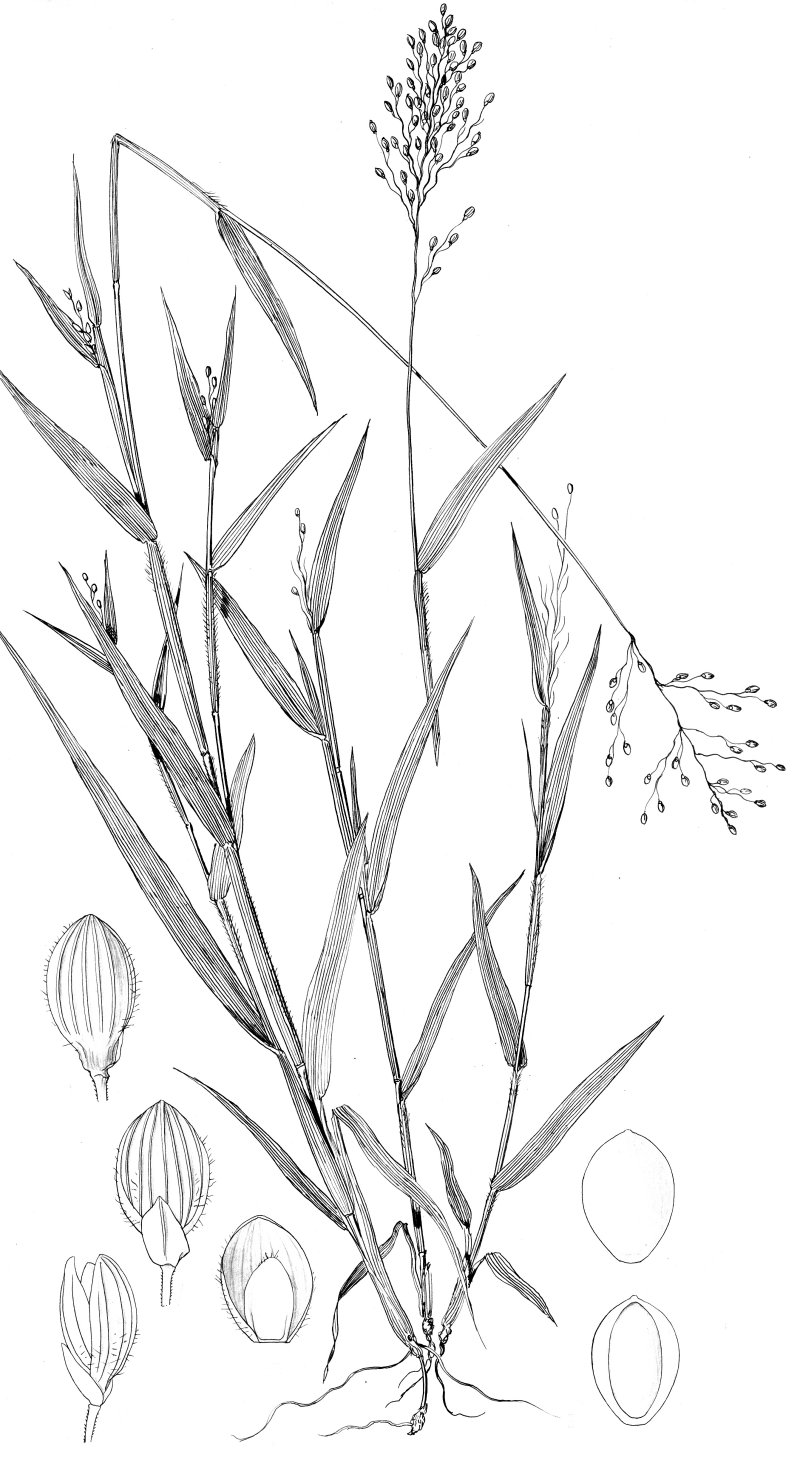
Dichanthelium oligosanthes var. scribnerianum Nash. Scribner Dichanthelium Habit: Somewhat tufted perennial. Vernal form: In clumps of few to many culms. Culms: Erect or ascending, 15-60 cm. tall, often geniculate at the base, sometimes widely spreading, glabrous or harshly puberulent or sometimes ascending-pilose. Blades: Ascending or erect, 5-10 cm. long, 6-12 mm. wide, firm, rounded at the ciliate base, glabrous above, scabrous and sparingly hairy beneath or glabrous. Sheaths: Longer than the internodes, loose, striate, strongly papillose-hispid to nearly glabrous. Ligule: About 1 mm. long. Inflorescence: Panicle short exserted, 4-7, rarely 9 cm. long, two thirds to three fourths as wide, the branches ascending or finally spreading, the secondary ones much smaller and more or less included. Spikelets: 3.2-3.3 mm. long, obovate, blunt, very turgid, obtuse, strongly nerved, sparsely pubescent or nearly glabrous. Glumes: First glume ovate, one third as long as the spikelet, acute, second and sterile lemma subequal, broad, about 9-nerved, glabrous or finely pubescent. Fruit: 2.8-2.9 mm. (sometimes only 2.5) long, 1.8-1.9 mm. (1.6) wide, broadly elliptic, minutely apiculate. Autumnal form: Branching from the middle and upper nodes. Habitat: Meadows, prairies, sand prairies. May-July. Kansas Range: East three fourths. Remarks: A very abundant prairie grass in spring. Synonyms: Panicum helleri Nash Panicum macrocarpon Le Conte ex Torr. Panicum oligosanthes J.A. Schultes var. helleri (Nash) Fern. Panicum oligosanthes J.A. Schultes var. scribnerianum (Nash) Fern. Panicum scoparium S. Wats. ex Nash, non Lam. Panicum scribnerianum Nash